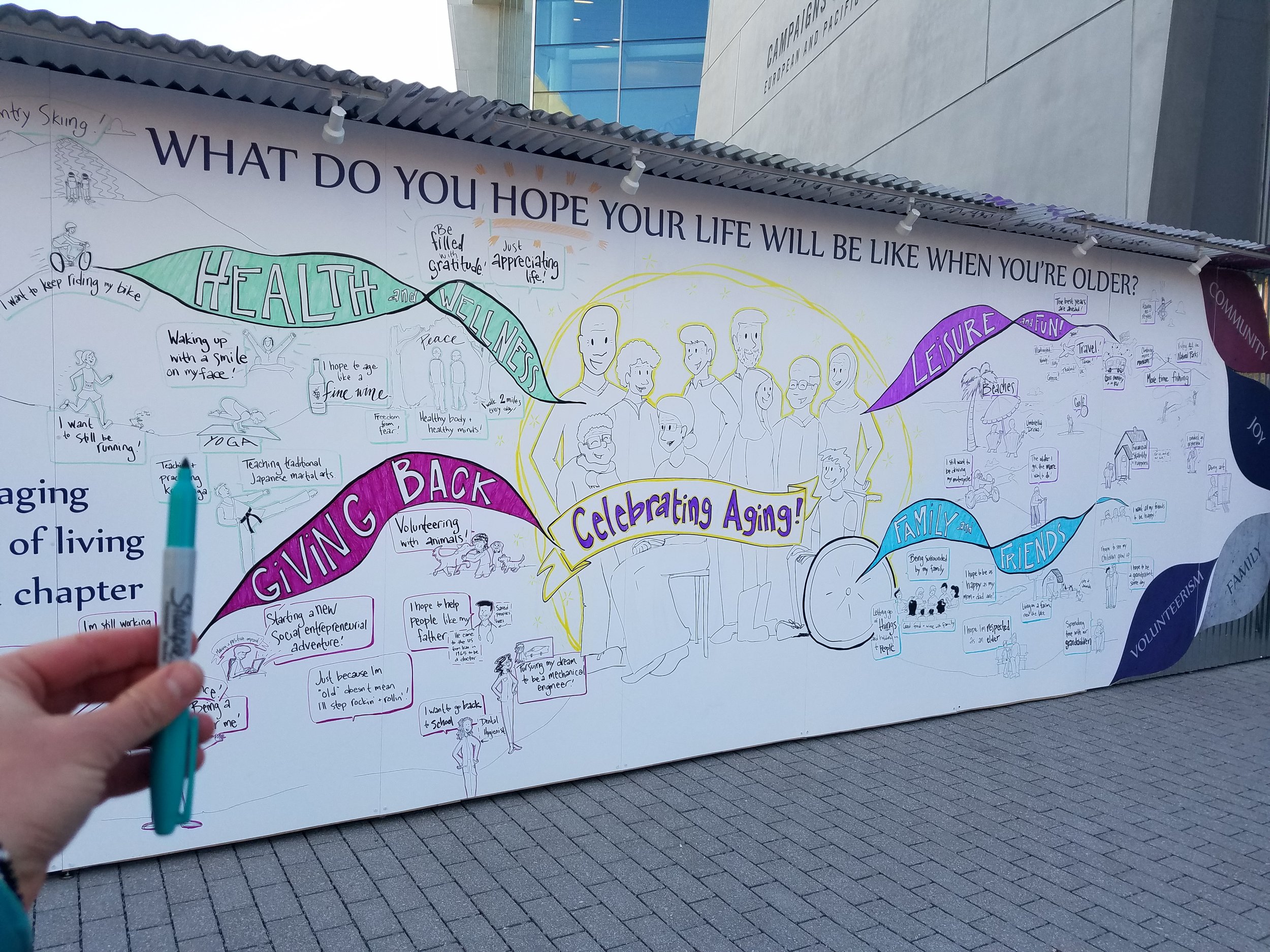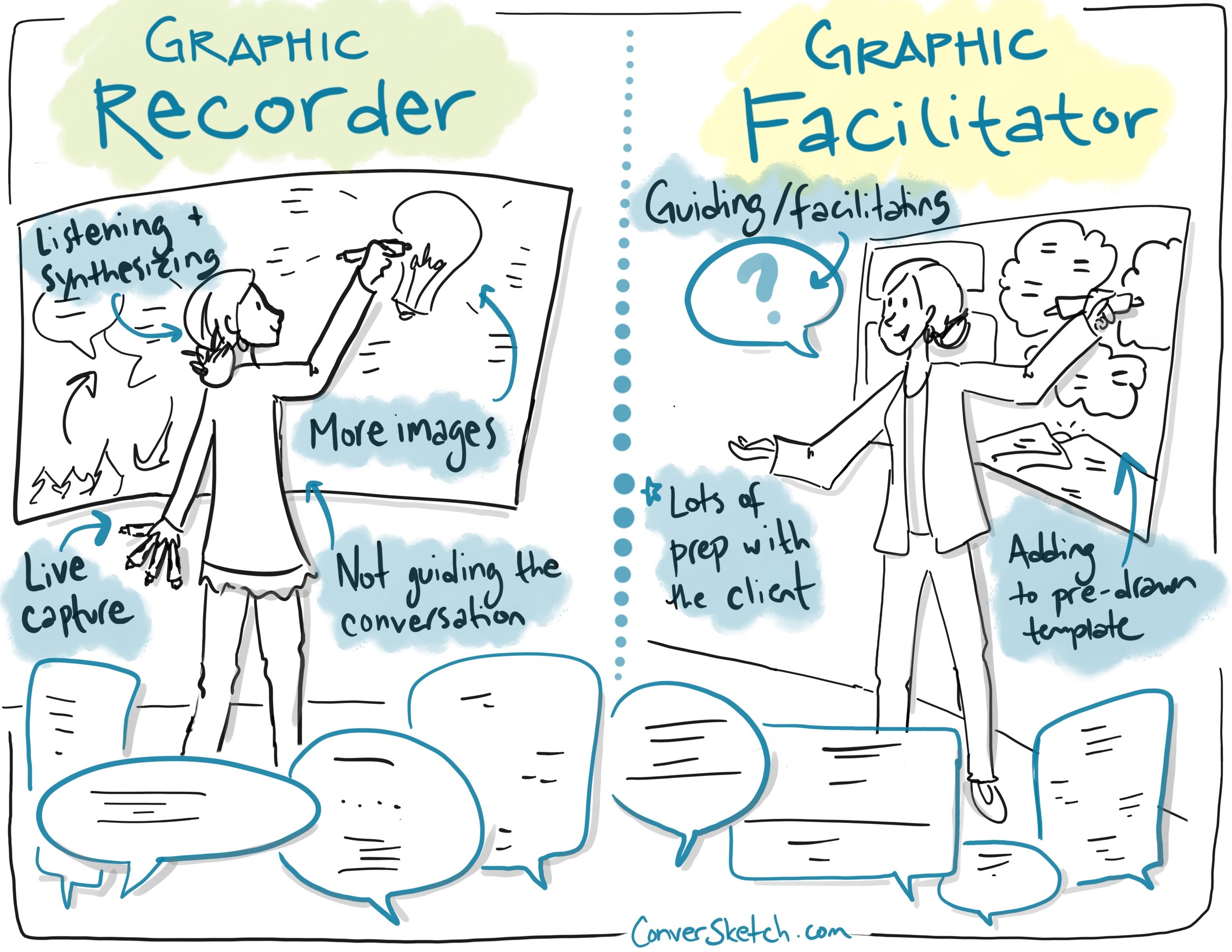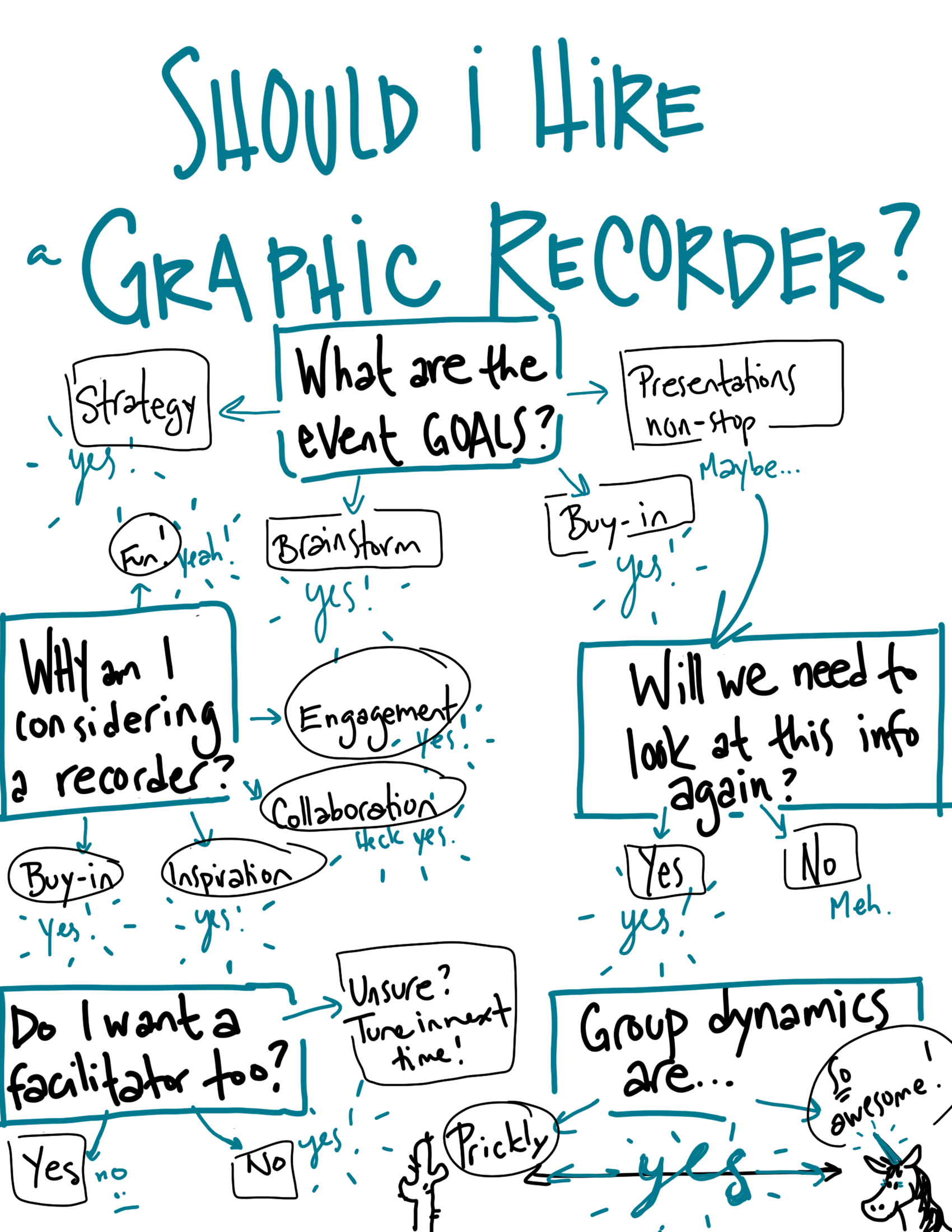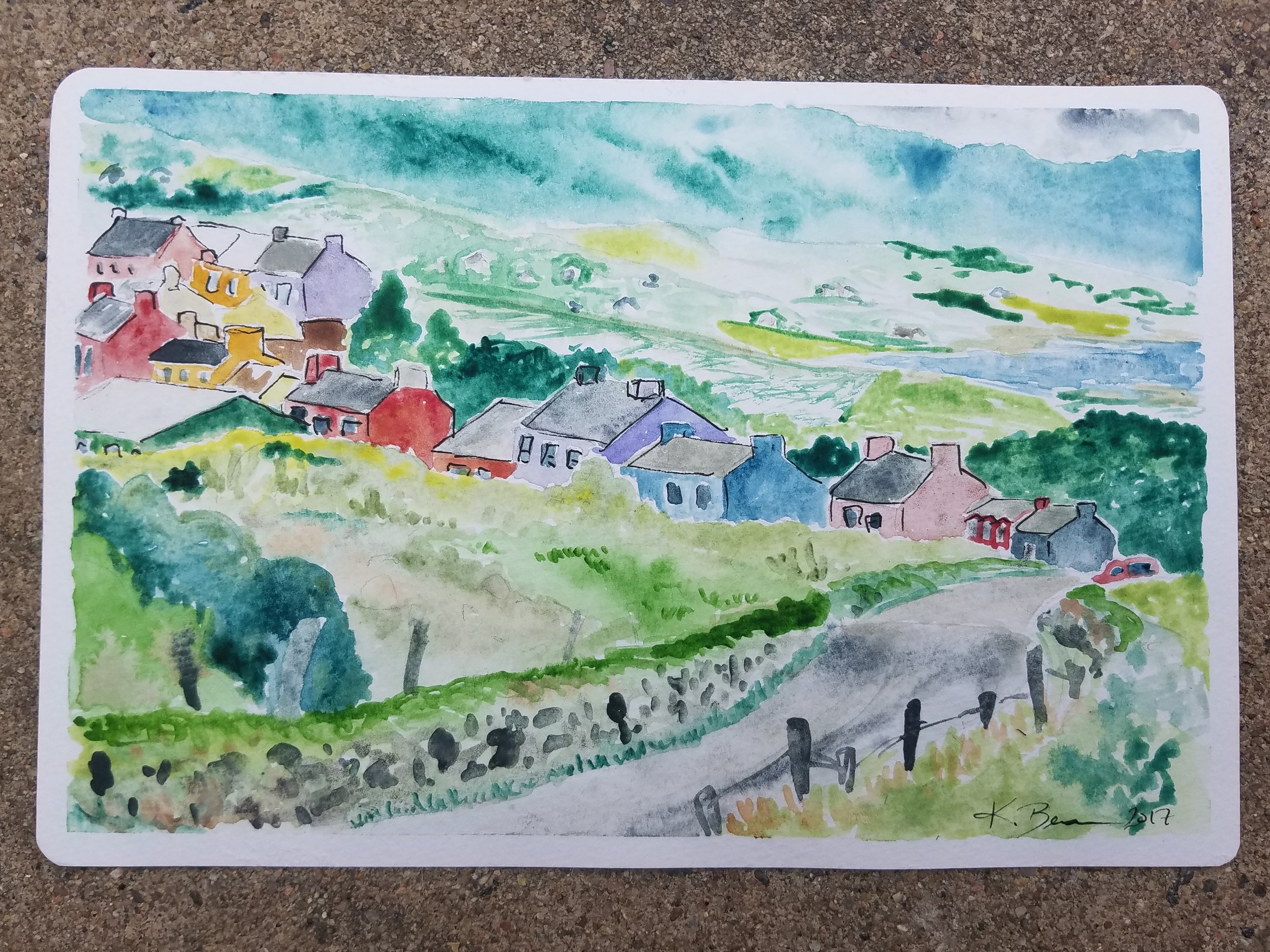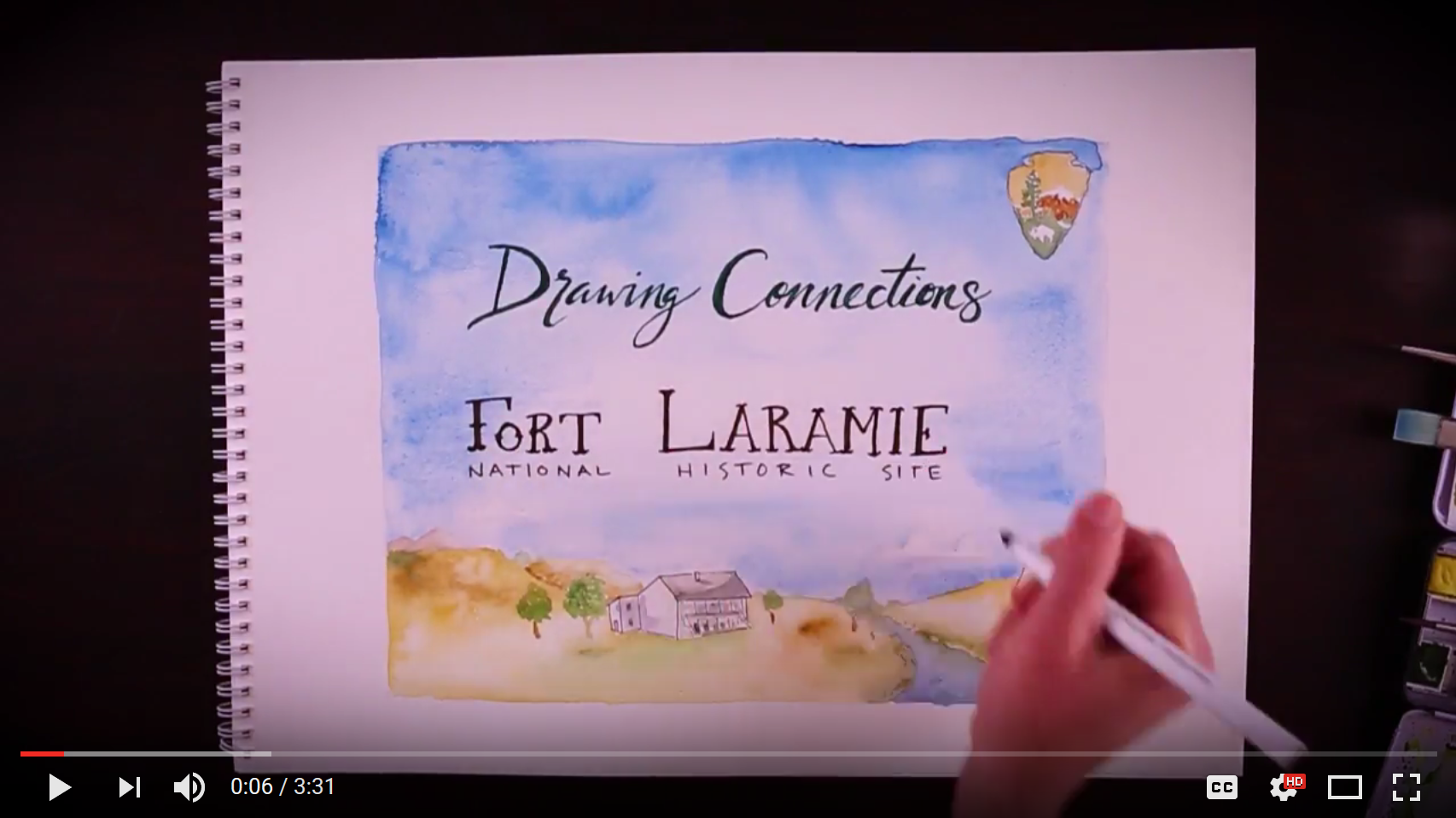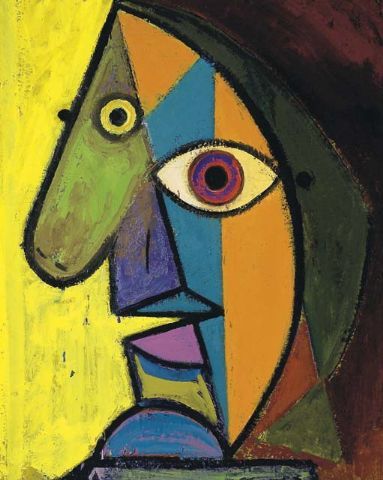The Trade Show. A massive room filled with hundreds of booths, all wanting to lure in the same passers-by.
Most booths are using the same old methods they always have: the freebies, candy, “try our product!” to nab attention. There are trinkets everywhere. By the end of the day all you see is a glazed look on attendees’ faces as they attempt to find the exit (and preferably the nearest bar).
There’s something missing from this scenario. Something that can set you up for authentic connections and hook your potential clients.
Here’s the secret: people don’t just want a sales pitch, they want to be heard. They are yearning for genuine human connection in a sea of people trying to get their business.
Secret Part Deux? You can have it all: listening to your customers, interactive and engaging displays, freebies, and authentic human connection.
All you have to do is partner with a graphic recorder.
I love chatting with attendees, asking for their ideas, and seeing them light up as they watch their story come to life. Then they want a photo with their drawing, which is the perfect opportunity to ask them to tag the business I am working for when they share it on social media. Boom.
Bonus: Major human connection opportunities, and if you play your cards right, you can get valuable market research data collected in real-time.
Once again, thank you from my heart and soul for your support, great senses of humor, brilliant minds, collaboration and what you're each doing to make the world a better place.
Cheers, Karina
Heading to a trade show next year? Let’s make a plan to help you stand out in a sea of booths!
Yes!
Where in the World is ConverSketch?
New Orleans with LeadingAge
I spent last weekend outside the National WWII Museum gathering stories about how visitors wanted their lives to be when they got older. From "no regrets" to "aging like a fine wine", I captured visual stories over the two days!
Nashville with Gates
Today I'm headed to Nashville to do some more story capturing for Gates. We haven't started yet, but here's a snippet from work I did with them earlier this fall!


